Probably the biggest barrier I used to have when it came to making bread or anything dough related, was the kneading. How do you know if you’ve kneaded it enough? What’s it supposed to look like? Should it be sticky? Do I need to add more flour? How do I actually KNEAD? There are so many questions when you’re starting out!
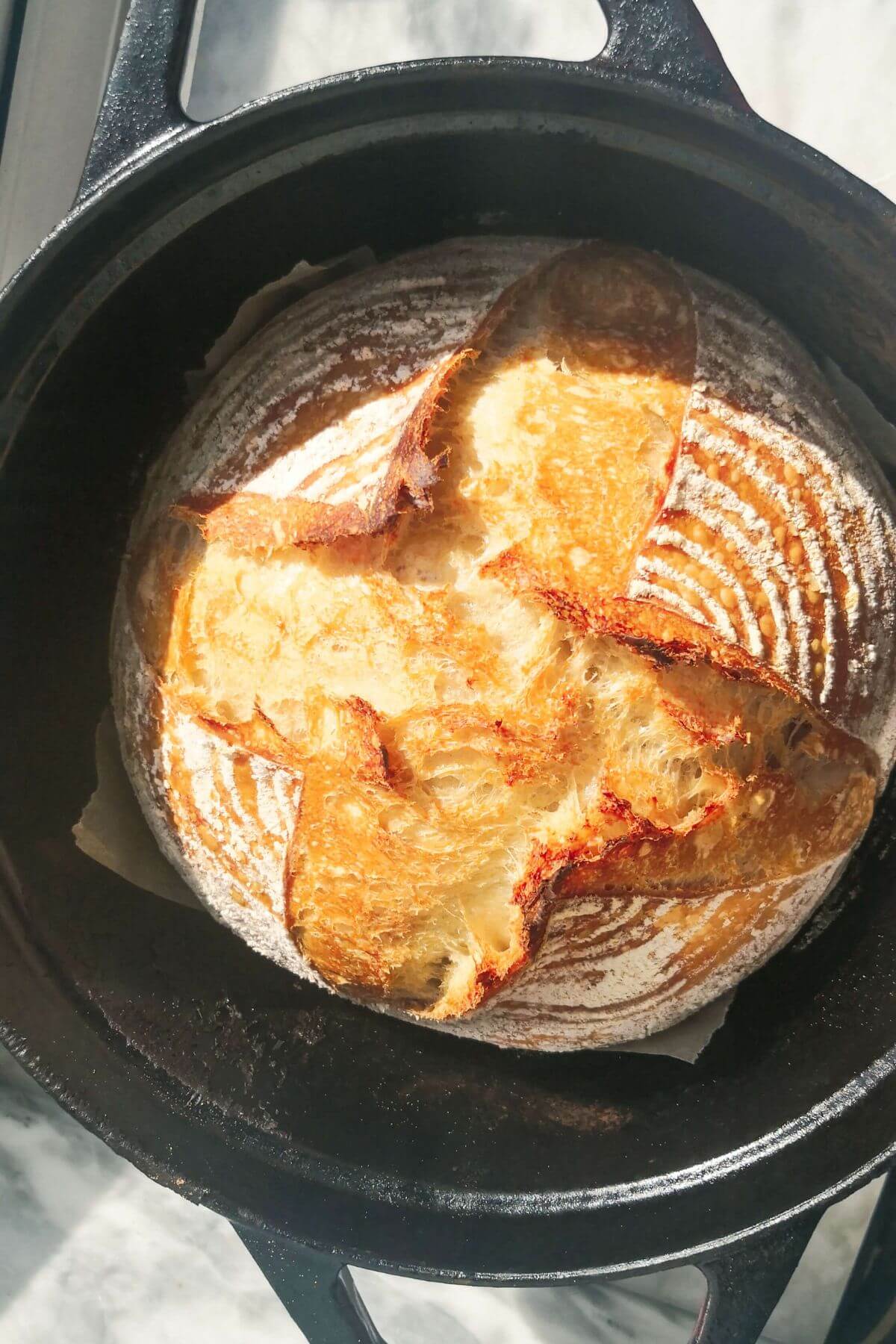
Luckily, I’m going to break it all down for you.
The first thing to say is that you don’t need to know any fancy techniques to knead dough. It takes 10 (or less) minutes, and all you need is your hands, a little flour and a flat surface. But let’s go back to the beginning.
Why do we have to knead dough?
In simple terms, kneading gives strength and structure to your finished bread. It develops the strands of gluten present in the flour, resulting in a smooth and strong dough that will rise up beautifully and bake like a dream. To get all science-y, flour has two proteins that will combine to form gluten strands (which makes the springy, elastic feeling you get with dough). When you start out with your mixed dough, the gluten strands are all knotted and mixed up. But when you start to knead, these strands come together and line up. They then develop the structure that will trap air and let the dough rise.
If you don’t knead your dough, or don’t knead it enough, you can end up with floppy dough that won’t rise well. It can spread out, flatten and end up super dense once it’s baked.
But don’t worry! I’m here to show you how to knead so you’ll have success every time.
How to knead your dough
Let’s break this down step by step!
After you’ve mixed your dough in a bowl, get a clean surface ready. You can use a large board, or just your kitchen bench. Scatter a little flour (you don’t want a lot – this is just to keep the dough from sticking to the surface. Start with ¼ cup) onto your surface. Scrape your dough out of your mixing bowl onto the surface.
Now you’re going to start the kneading process. Using the heel of your hand, press down firmly into the dough and push it out away from you.
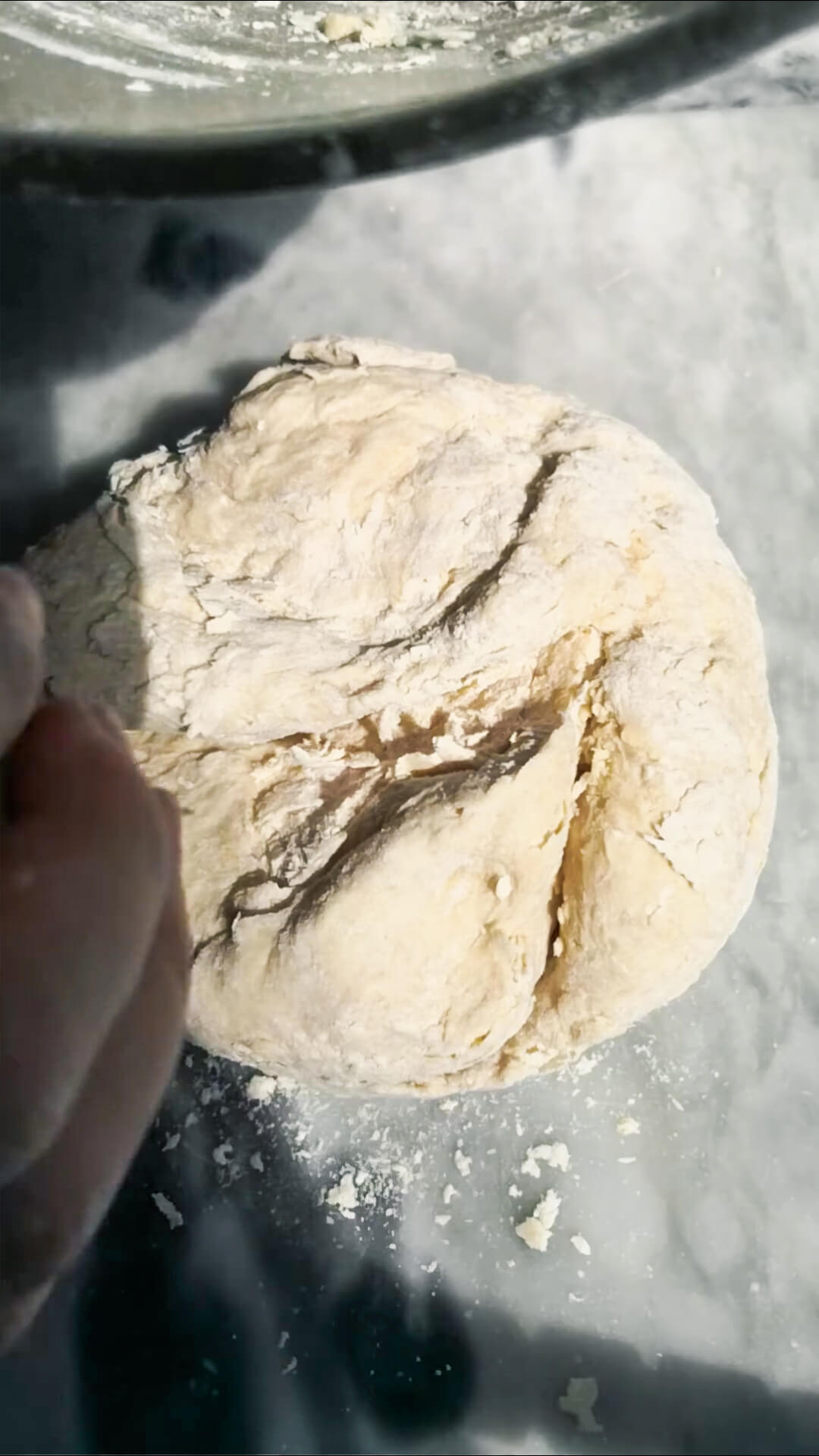
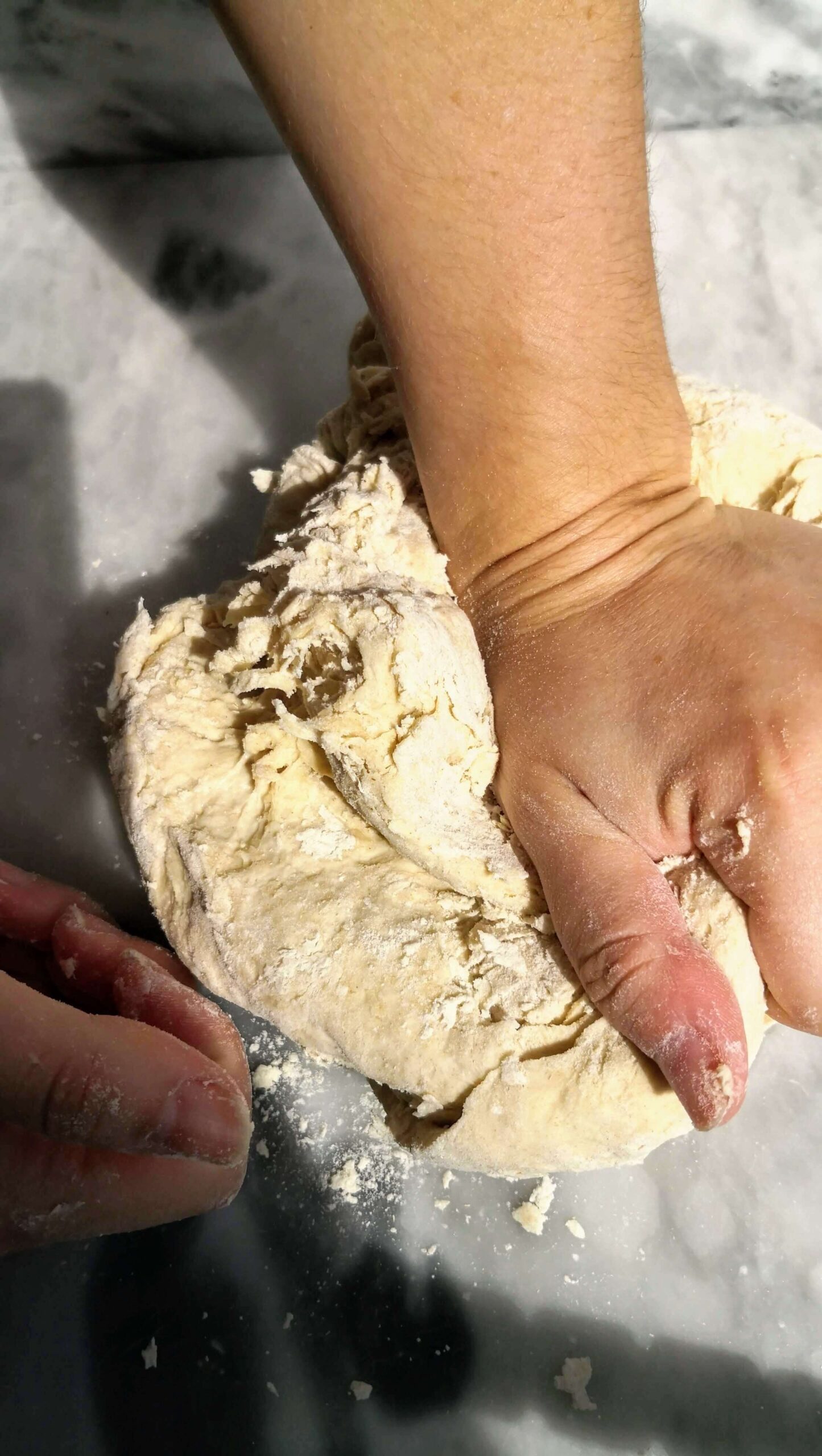
Fold the part you just pushed away back over itself, then press down firmly again with the heel of your hand and push it away again.
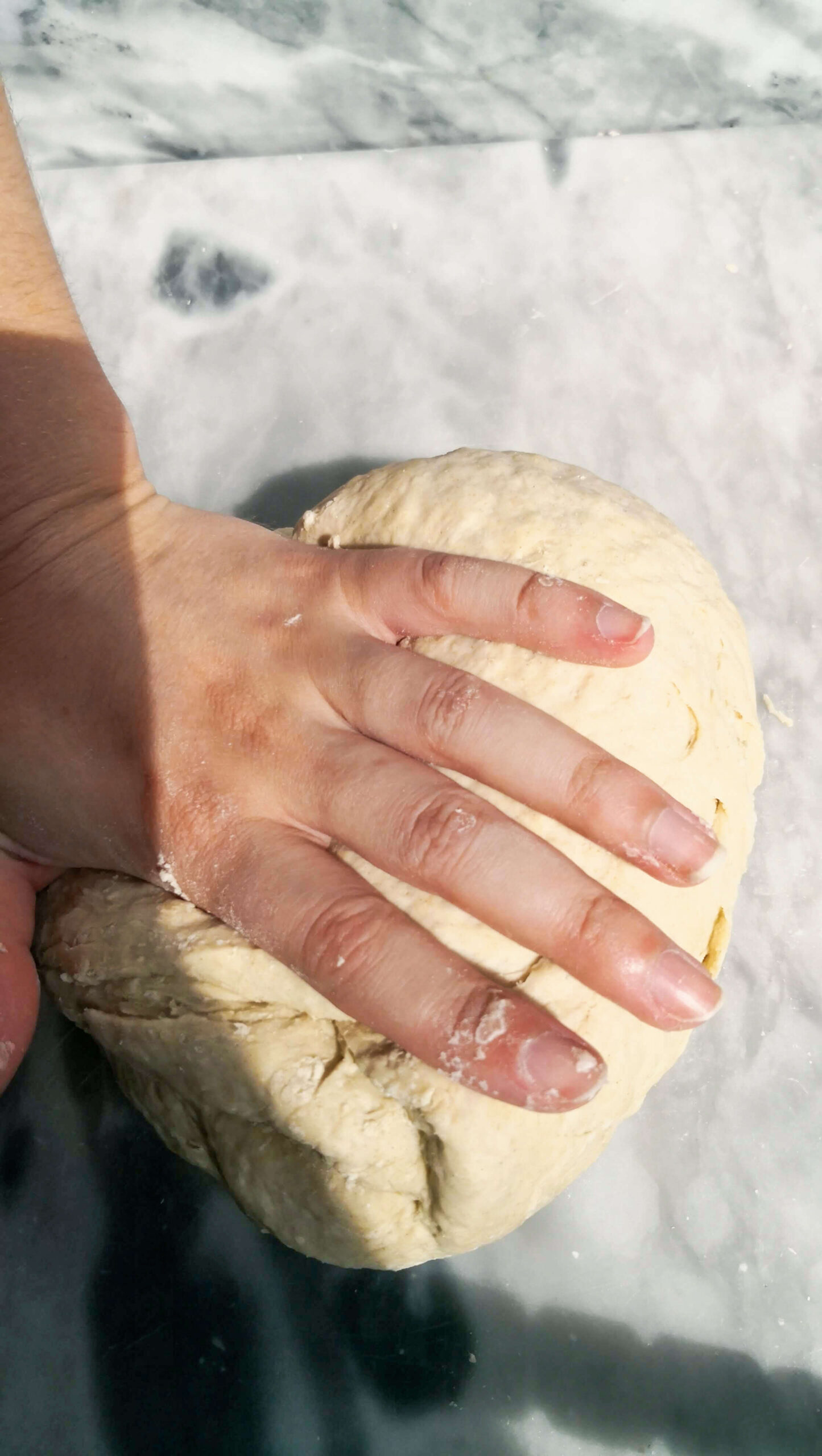
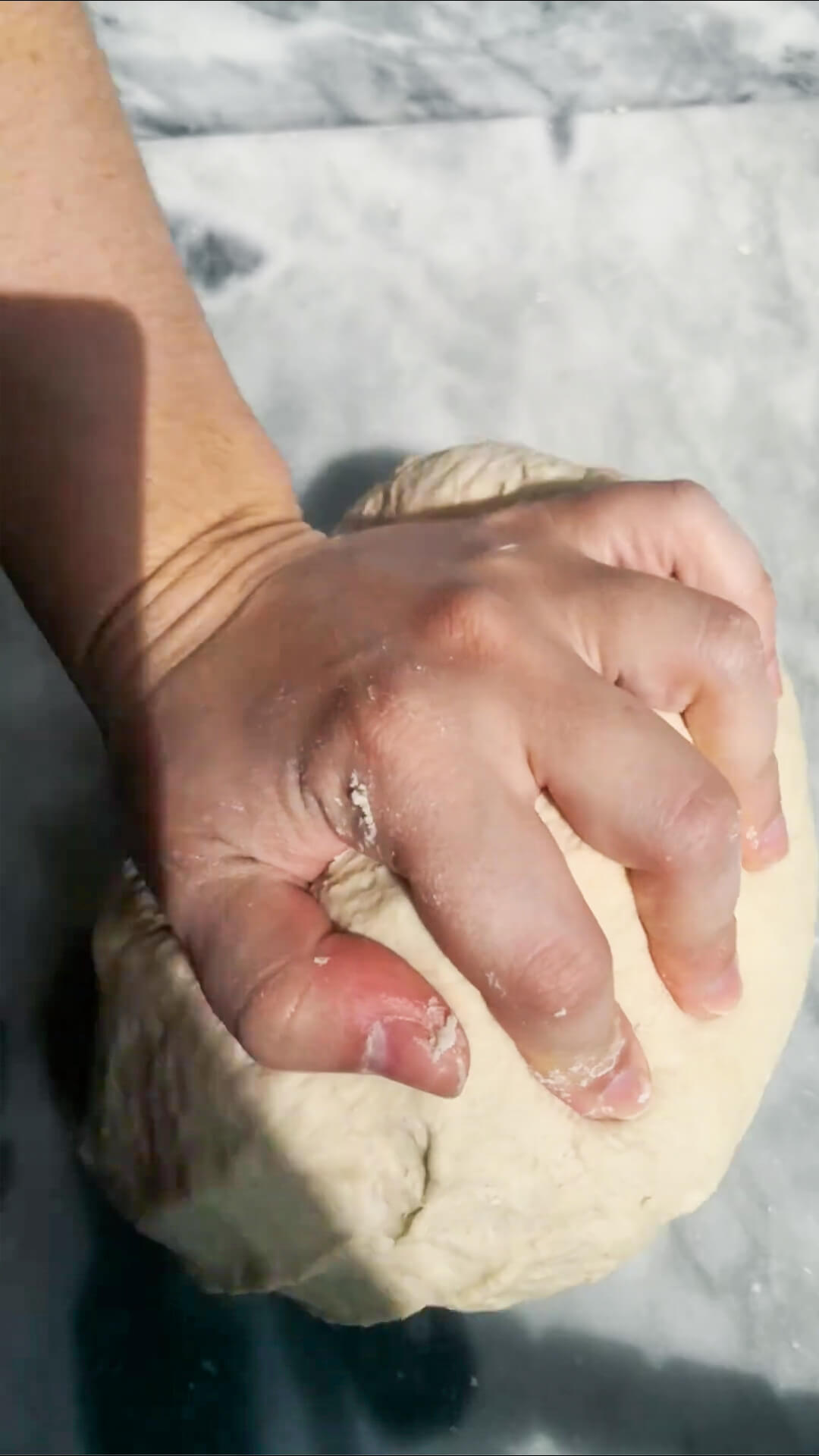
Fold it back over itself, give the dough a quarter turn, and repeat this process. Repeat this again, until you start to feel the dough change. The dough will start feeling rough, floury and will easily break apart. As you knead, you’ll start to feel it change. It’ll become smoother, supple, elastic and it won’t be sticky to touch.
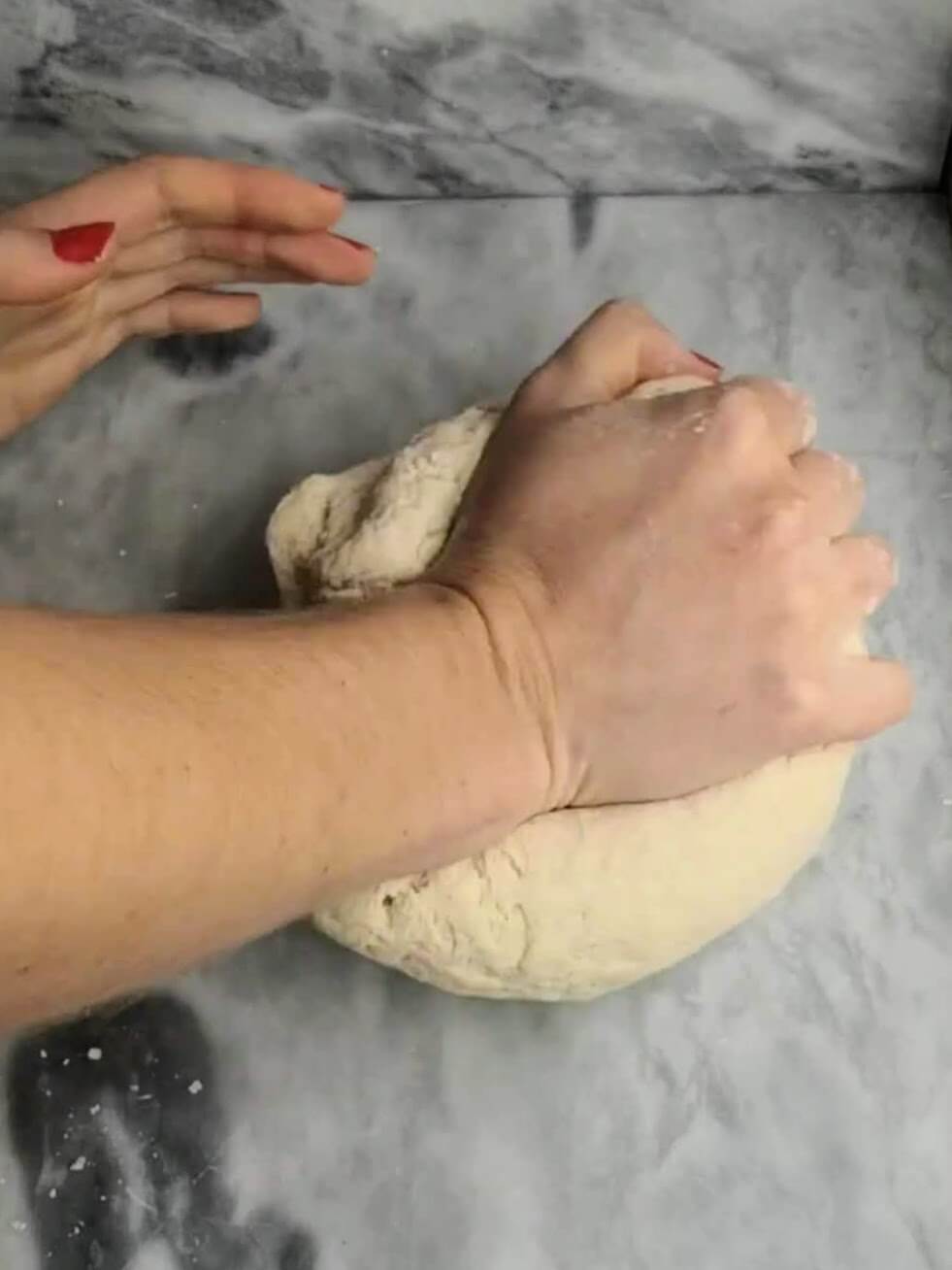

Recipes should give you a guide of how long you should knead for so use that, but with practice, you’ll be able to tell when it’s ready based on how it looks and feels. As a general rule, about 10 minutes of kneading by hand is enough.

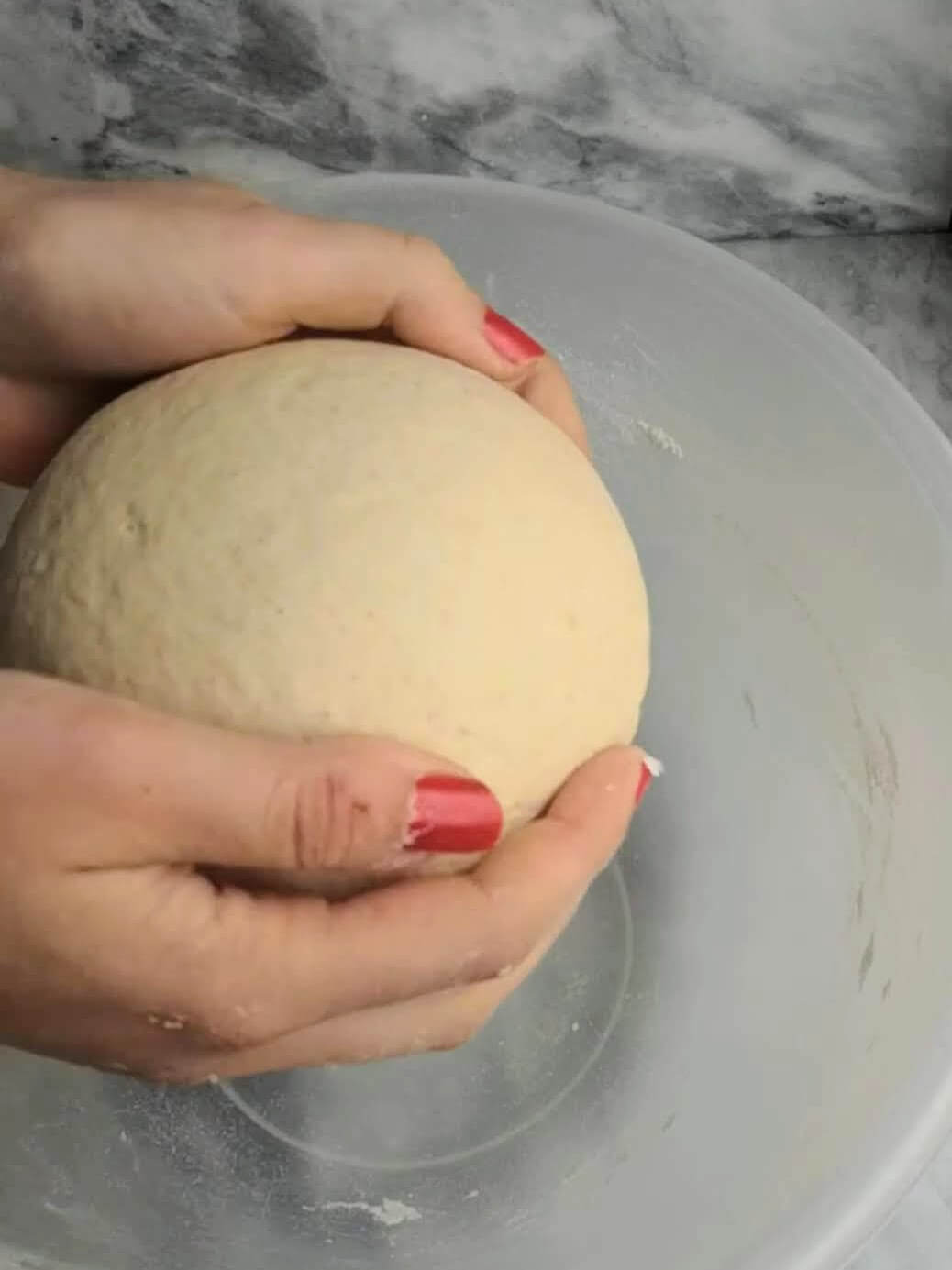
My dough is sticky and hard to handle – how can I fix it?
Use a little flour if the dough is sticky, but be careful about adding too much flour. Add about ½ a tablespoon at a time. If you do add too much, you’ll end up with a dry, crumbly bread.
If it’s REALLY sticky and you’ve used flour to help, cover the dough with a clean tea towel or the mixing bowl and leave it for 5 minutes. This can help the dough relax as the water continues to absorb into the flour and makes it a little easier to work with.
How do I know if my dough has been kneaded enough?
This, more than anything, was always my worry when I was starting out with bread making. Even if a recipe gives you a guide on timing, dough is so temperamental and I was never quite sure if it was right.
Luckily, there are 3 ways you can test your dough. Once your 10 minutes are up, or when your dough is feeling soft, smooth and supple, try these tests to check!
- The poke test. This is the simplest way to check how things are going. Give the dough a good poke with your finger. If the indentation in the dough stays there, it needs a little more kneading. If it slowly springs back into place, it’s good to go.
- The windowpane test. Pull a little piece of dough (about a golf ball size) off, and stretch it out super thinly, holding it up in between your hands. If the dough has been kneaded enough, it’ll stretch out thinly without breaking. If it breaks, it needs a little more work.
- The shape test. Shape the dough into a rough ball and pick it up with your hands. If it stays in that shape, it’s good to go. If it slackens – or if it’s impossible to pick up because it’s so loose – give it more work.
How can I tell if I’ve kneaded my dough for too long?
This honestly is pretty hard to do by hand – you’ll most probably tire your poor arms out first! It’s more likely to happen if you’re using a stand mixer and leave it in there too long or have it on a very high speed. If the dough is super hard and tears easily, it’s over kneaded and can result in a flat and dense bread once baked. But I really wouldn’t worry too much about this one if you’re following the technique above.
What about no knead bread?
Confusingly, no-knead bread is a real thing (and something I love!) Talking about how great no knead bread is might seem like a contradiction. But the way that works is that when dough is left to prove and rise for a longer period of time (around 12 hours), gluten will start to form naturally. That’s because the enzymes in the flour will start to get to work to break down the gluten themselves.
It’s why sourdough often doesn’t need a lot of kneading – and why no knead bread recipes often use an overnight rise in the fridge. There are also a couple of hacks that will work with high hydration doughs (dough with a high percentage of water content) like focaccia. Giving these doughs sets of ‘stretch and folds’ is a simple way of developing some strength, without traditional kneading. I break this down in my recipe for easy no knead focaccia.
An easy recipe to get you started
Now you know how to knead, why not give it a go? This recipe for super soft garlic flatbreads is a nice easy one to start with. And you’ll be left with the most delicious flatbreads you can use as wraps, naan, pizza bases or just to scoop up a delicious dip!


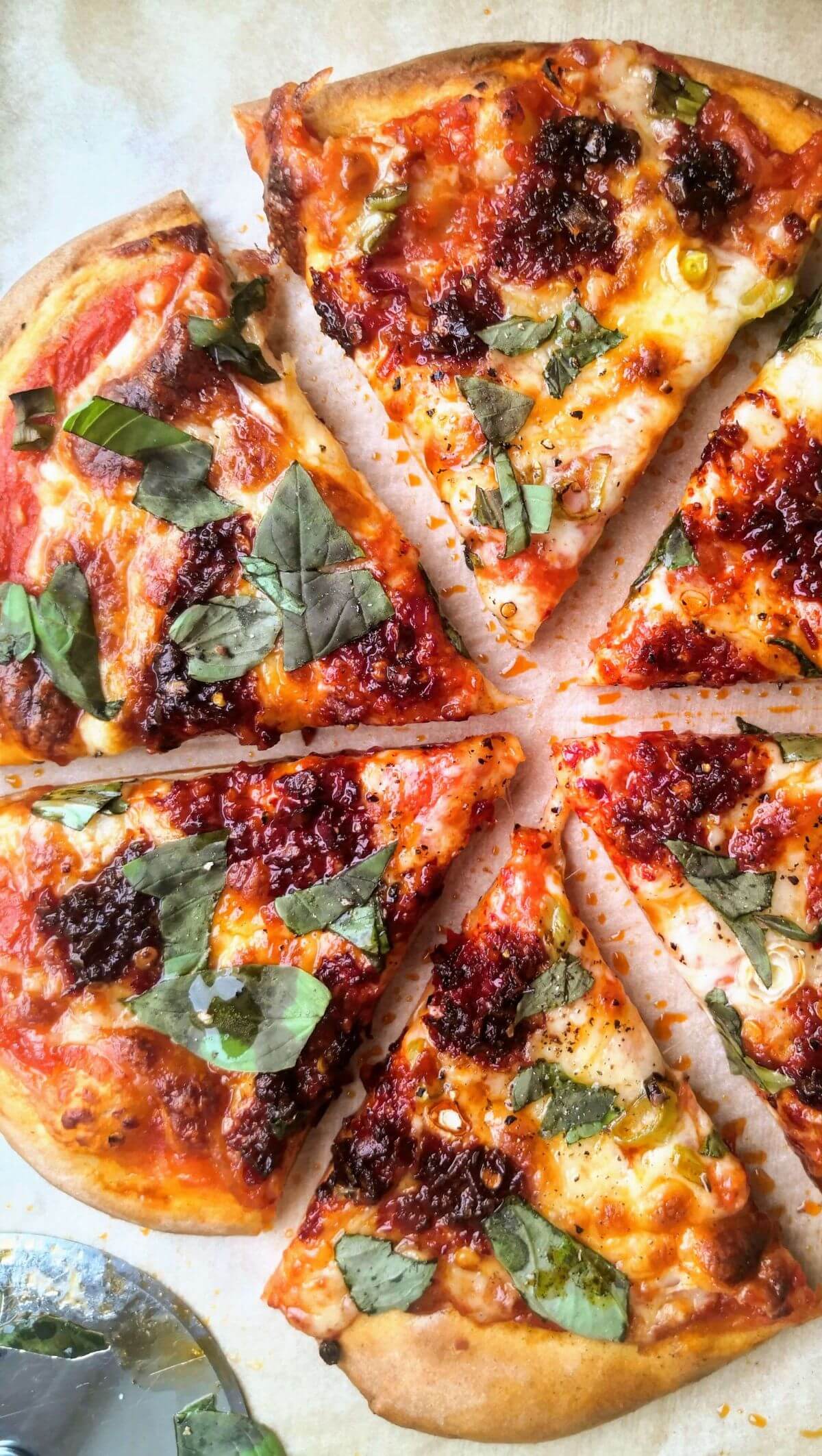
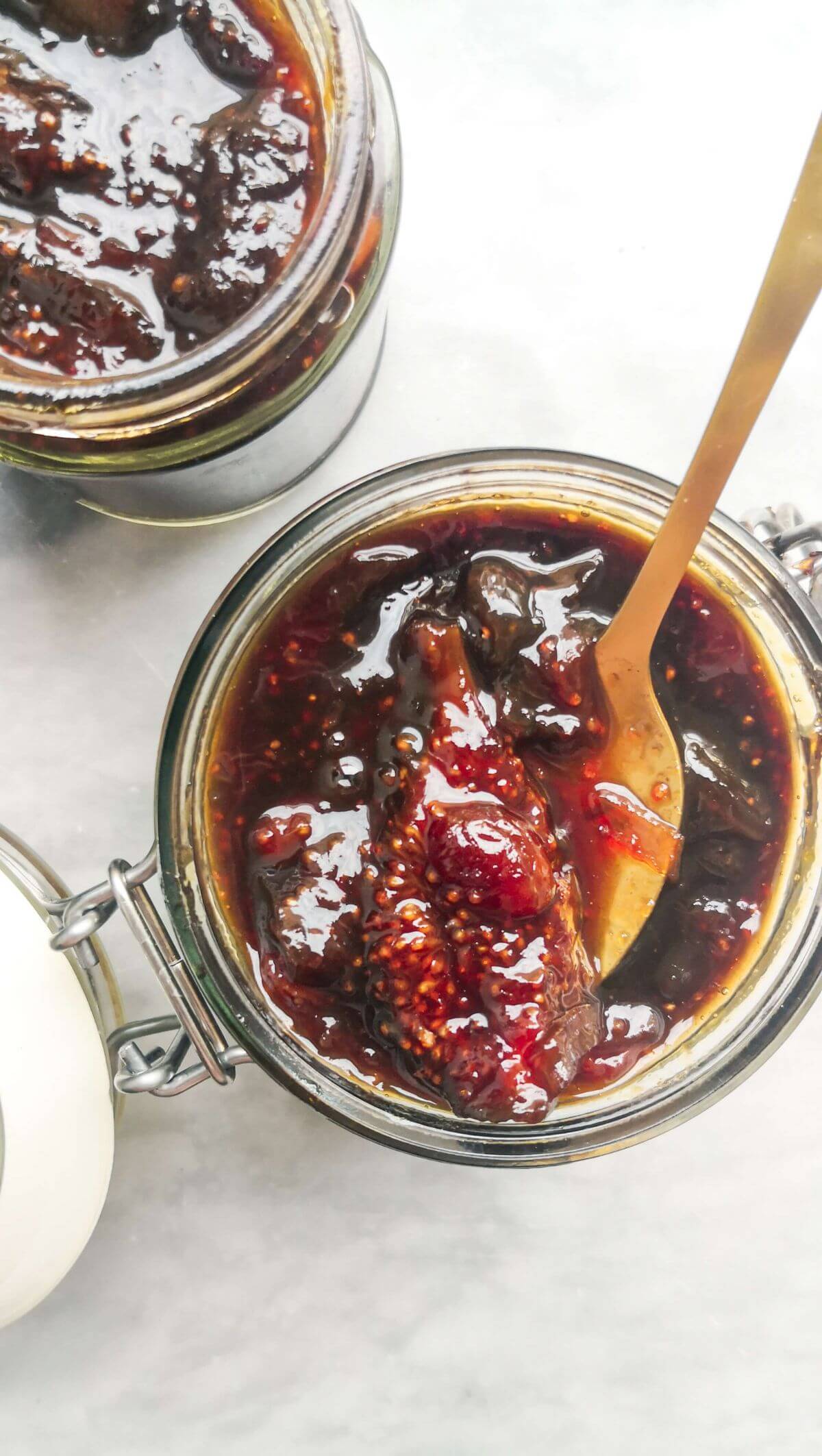
0 Comments